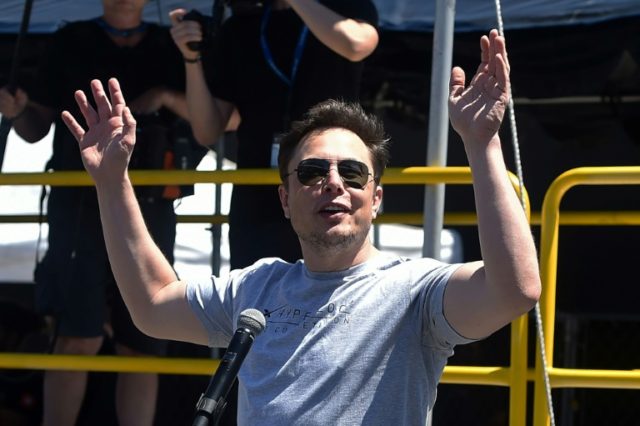Forbes published an article recently which describes the inner workings of Tesla’s car factory, where safety violations are continuing to rise at an alarming rate.
Reveal News reported in November of 2018 that at Tesla, workers are expressly forbidden to call 911 in the event of a factory injury without company permission. Instead, company doctors inspect the worker’s injuries and in many cases allegedly have the worker sent to a local hospital via Lyft ridesharing. This is the experience that one employee reportedly faced when their finger was severed while working at the company.
Injured employees have reportedly often been sent back to work with no modifications whatsoever following visits to the on-site medical center. According to former clinic employees and medical records, some of these employees could barely walk when they were ordered to return to the assembly line. Now, Forbes reports that Tesla’s Fremont, California, plant has received more workplace safety investigations and complaints than their other U.S. auto rivals.
Forbes writes:
Tesla’s 5.3-million-square-foot plant in Fremont, California, has among the most workers of any U.S. auto plant—more than 15,000 full-time and contract employees labored alongside dozens of acrobatic red Kuka robots last year, assembling about 254,000 sleek electric Teslas. Ahead of the launch of the Model 3 sedan, CEO Elon Musk envisioned creating the world’s most automated assembly process, describing an “alien dreadnought” that would run rings around more conventional Toyota or Ford plants.
It hasn’t worked out that way. Instead of being a wonder of 21st-century automation, the assembly lines that produce Tesla’s Model 3s and $79,000-and-up Model S sedans and X SUVs rely as heavily on human workers as ever. Now, as it hopes its newly announced $35,000 version of the Model 3 will boost demand, the factory is grappling with a more dubious claim to fame: It has been the target of more investigations into workplace safety and has incurred more fines than its rivals’ main U.S. auto plants in the past half decade.
The complaints at Tesla’s plant reportedly outpace those from Ford, BMW, and GM by a large margin:
A review by Forbes found 24 investigations by California Occupational Safety and Health Administration inspectors from 2014 to 2018, resulting in fines for 54 violations. These include new penalties that haven’t yet hit the national online OSHA database, and they nearly double Tesla’s fines over the last five years, to $236,730. They include one of the automaker’s biggest fines, assessed after a worker’s glove was caught in a torque gun, severing a finger tip, according to the state safety regulator.
By comparison, Nissan’s plant in Smyrna, Tennessee, which employs about 8,000 workers, was the subject of eight investigations and received just five violations in the same time period. And Toyota’s plant in Georgetown, Kentucky, which also employs about 8,000 workers, was the subject of 13 investigations, resulting in four violations. In California, anyone can call in a probe over safety; many don’t result in fines, but some produce multiple citations. Tesla has contested most of the Cal/OSHA fines with California regulators.
Even accounting for its larger workforce, the violations and fines at the Tesla factory, in a commuter suburb of San Francisco, dwarfed the total for 10 big U.S. auto plants, including those of BMW, Ford and GM. They employ about 58,000 workers altogether and incurred just 18 OSHA violations in the past five years with less than $90,000 in fines. While reports of gruesome worker injuries have dogged Tesla’s auto plant for years (often promoted by groups affiliated with the United Auto Workers, which seeks to get the plant back to the union status it had when it was operated by General Motors and, later, Toyota), the number of Cal/OSHA investigations and fines puts the depth of investigators’ concerns—and the challenges facing new management that was brought in to overhaul its safety problems in late 2017—in a new light.
Tesla has claimed that they’re working hard to lower the number of injuries and complaints at the plant, but the company’s breakneck production pace makes this an issue. Tesla hired their safety chief Laurie Shelby in late 2017, when she was asked about the number of fines the Fremont plant had received she replied: “I don’t want fingertip amputations. Injuries are going to happen, because we have great people who are going to get the job done. We just have to make sure our controls are in place.” Forbes writes:
“We’re not perfect,” Shelby said during a recent interview at the plant. “We make mistakes. We’re human. But our goal is to learn and to move fast.”
She’s been aided by Keith Champion, who spent about 18 years at Toyota and has been overhauling training for new hires to help reduce injuries and boost efficiency. Four years ago, new Tesla workers got much of their training on the job.
“I don’t remember any kind of training,” said Alan Ochoa, a former member of the plant’s Model S and X line quality control team, who was among 800 Fremont employees fired in January, when the company laid off about 3,000 people.
“When I started, if they found one thing you were really good at, you were going to be there for 12 hours a day, five, six, seven days a week,” Ochoa said. The 31-year-old resident of Mountain House, California, ended up with carpal tunnel syndrome in both hands, which led to two surgeries and a permanent work restriction to avoid lifting anything heavier than 55 pounds.
Read the full article in Forbes here.
Lucas Nolan is a reporter for Breitbart News covering issues of free speech and online censorship. Follow him on Twitter @LucasNolan or email him at lnolan@breitbart.com

COMMENTS
Please let us know if you're having issues with commenting.